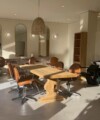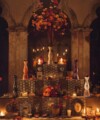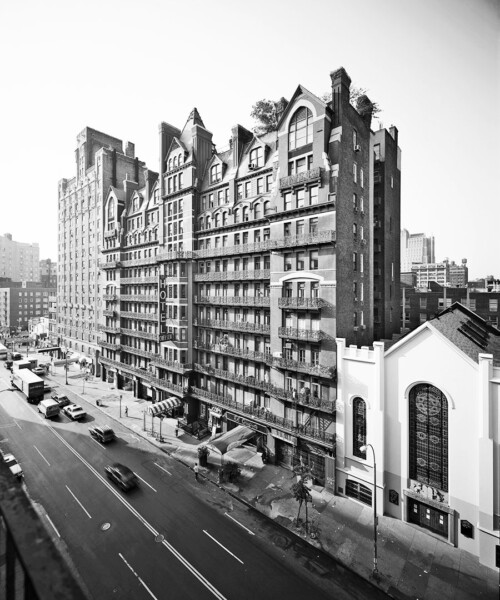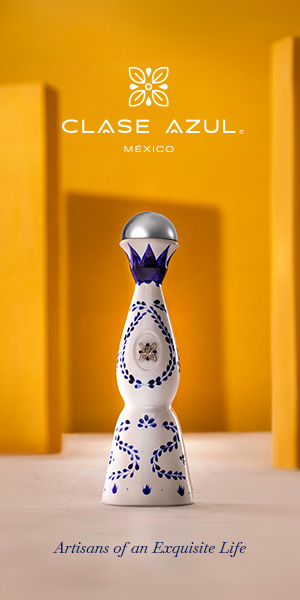“One day there was a huge thunderstorm as I happened to be crossing 23rd Street at 7th Avenue,” said biographer Sherill Tippins at a recent book signing at the Strand. “I was jumping over a large puddle and looked up to see the Chelsea Hotel, storm clouds roiling overhead, when suddenly a huge bolt of lightning crashed over the hotel! After that I thought, how could I possibly ignore this omen? The Chelsea Hotel is ordering me to do its bidding.”
With its ironed gables, peaked roofs, and red brick chimneys, the beautiful West 23rd Street behemoth has housed some of history’s most famed writers, poets, musicians and artists. And though the once decadent building has become dusty and dilapidated over the decades, passion for the Chelsea Hotel still lives on.
It picks up with the book that resulted from Tippins’ encounter, Inside the Dream Palace: The Life and Times of New York’s Legendary Hotel. Filled with fascinating stories about the hotel’s residents, including Thomas Wolfe, Arthur Miller, William S. Burroughs, Jackson Pollock, Andy Warhol and Janis Joplin among many more, the novel depicts the building’s far-reaching influence on the art, plays, films, books, music. In short, the Chelsea Hotel changed New York City culture as a whole.
Originally meant to be a utopian community based on the writings of philosopher Charles Fourier (he believed that the ideal “phalanx” consisted of many different types of people coexisting together regardless of wealth, social status or occupation), “architect Philip Hubert tried to make the Chelsea an experiment in the city, creating a shell within which every possible type of New Yorker would be forced to interact with the others,” Tippins tells DuJour.
Though it would be a stretch to call the Chelsea Hotel a “utopia” by any means, the philosophy behind the structure did echo through the decades as New Yorkers of all ages, professions and backgrounds continued to call it their home. Now, the hotel is experiencing a period of change—once longtime manager Stanley Bard was ousted from the board in 2007 and the hotel was sold outright in 2011. But the 80-some residents who live there—and Tippins herself—remain hopeful. “I refuse to be pessimistic about the current state of the hotel,” she says. “I feel that no matter what, the Chelsea survives.”
With the future of the hotel hanging in the balance, her book is just as timely as it is endlessly fascinating. Below, 10 of our favorite moments in Chelsea Hotel history.

Ronald Tavel, Jack Smith, unidentified man, Harry Smith, Panna Grady, William Burroughs, and Andy Warhol. Photograph by David McCabe
1. Though Nancy Spungen’s notorious murder remains the most well-known mystery that stemmed from the Chelsea Hotel, countless others also lost their lives within the walls. Among the victims: society lady Almyra Wilcox, found dead of an overdose next to a half-written love letter; artist Frank Kavecky, who committed suicide after being robbed of funds for the Hungarian Sick and Benevolent Society; Etelka Graf, who severed her left hand before leaping to her death from the fifth floor window; and rock photographer Billy Maynard, beaten to death in his eighth-floor room.
2. Art enthusiast Peggy Guggenheim once arranged a luncheon to introduce the then-unknown Jackson Pollock to a dining room full of wealthy art collectors, where the artist proceeded to get incredibly drunk and got sick on the floor. Peggy’s sister, Hazel McKinley, famously suggested that the hotel staff cut out and preserve the square piece of carpet, claiming it would someday be worth millions.
3. The rooms—and animals—in the Chelsea hotel were as eccentric as the inhabitants themselves. Composer George Kleinsinger imported twelve-foot trees from Madagascar and Borneo to transform his studio into an actual jungle, complete with exotic birds, a monkey and an eight-foot-long snake. Dancer Katharine Dunham routinely held dance rehearsals in her studio, and once brought two full-grown lions up in the elevator to make her Aida rehearsal “more real.” She was shortly thereafter kicked out of the hotel.
4. Along with bringing modern art to America with the 1913 Armory Show, artist Arthur B. Davies lived a scandalous existence in New York City. Juggling two different wives unaware of the other’s presence, Arthur B. Davies rented a room at the Chelsea Hotel where he could keep his young mistress. The teenager would sing opera while modeling for the artist, according to lore. Davies’ extensive art collection, and his knack for inspiring wealthy art enthusiasts to collect modern art, would later lead to the creation of the Museum of Modern Art.
5. Arthur Miller’s entire affair with Marilyn Monroe was deeply connected to the Hotel Chelsea. While trying to decide whether to start an affair with the superstar, he visited a drunken Dylan Thomas at the hotel—his affair began with in the next few days. Following their messy divorce, Miller returned to the Chelsea to recover from the fallout. Monroe committed suicide while he was living in a permanent suite at the hotel, and the playwright went on to write After the Fall. The main character of Maggie is widely believed to be based on Marilyn Monroe, although Miller claimed he didn’t intend that at the time.
6. Beat Generation characters like William S. Burroughs and Allen Ginsberg were regular guests at the Chelsea Hotel, often gathering to discuss new literary ideas. After a night spent drinking heavily together, writers Jack Kerouac and Gore Vidal had a one-night affair in the Chelsea Hotel. “Lust to one site, we owed it to literary history to couple,” Gore Vidal would later write of the evening. Both writers encouraged the night clerk to preserve the registry, where each signed their real names, claiming they’d be famous someday.
7. Stanley Kubrick’s 2001: A Space Odyssey was largely written at the Chelsea Hotel, and scenes from the movie were directly influenced by William S. Burroughs and Brion Gysin’s “Dream Machine.” The kaleidoscopic tube used light to correspond with the brain’s alpha waves to mimic the hallucinatory effects of doing acid, opening up the mind to new ideas without needing to actually take drugs. Kubrick intended to hypnotize the audience in the exact same way, through the use of spinning, dancing, psychedelic shapes that appear in astronaut David Bowman’s journey through space.
8. Inspired by the diverse rotary of residents and visitors in the building, Andy Warhol and Paul Morrissey thought the Chelsea Hotel would be the perfect location for a film shoot—but were kicked out of the hotel before they even finished shooting. When a switchboard operator was unable to tell that Brigid Bernard’s performance as a drug dealer making connections over the phone was actually an act, the police arrived and demanded that Warhol’s crew leave the hotel. Luckily, the directors had already filmed enough footage for a six-and-a-half hour film which was later split in two and played side by side, audio rotating between the two. Chelsea Girls was screened directly in the hotel, and later became the first underground film to be run in an actual art theater.
9. One night when returning to his Chelsea Hotel room, Leonard Cohen noticed that Janis Joplin was riding in the elevator with him. Curious, Cohen asked her who she was there to see. When she said she was looking for Kris Kristofferson, Cohen swiftly replied, “Little lady, you’re in luck—I am Kris Kristofferson.” Joplin cackled in response and the two returned together to Cohen’s suite, their night later recalled in his song “Chelsea Hotel No. 2.”
10. Drug use was so rampant in the hotel that the first floor was designated the “junkie floor,” where hotel staff could better keep an eye on some of their more questionable guests. Nancy Spungen and Sid Vicious were among those moved downstairs after a hotel clerk found them wandering their room in a druggy haze, completely oblivious to the fact that their mattress had caught fire from a lit cigarette. Unfortunately for the tragically fated duo, their move to the first floor couldn’t stop the tragic events that left Nancy Spungen dead from a knife wound in her Chelsea Hotel bathroom and Sid Vicious dead from an overdose weeks later, in possibly the greatest unsolved mysteries that the Chelsea Hotel has ever seen.







































